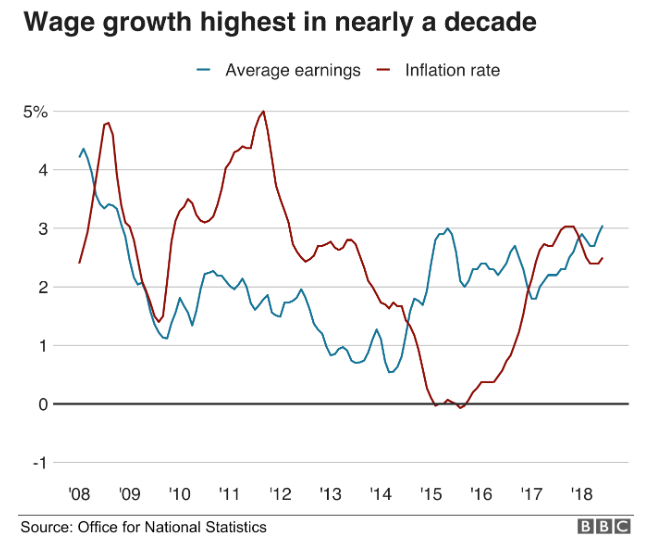
If you’re reading this congratulations: you’re keen to learn and therefore you’re already well one step ahead of thousands of apathetic employers who, quite simply, are getting left behind as the recruitment market shifts and finding top talent becomes ever more challenging amid the backdrop of record unemployment and a skills shortage that’s hitting critical levels in a number of sectors.
So, yeah, well done. You are not resting on your laurels. You are seeking answers and progression. And you’re in the right place. Here we explain how recruitment has/is changing in 2019, and the practical things you can implement to ensure you thrive and succeed this year and beyond.
Make no mistake: we are in a candidate-short market and this is consistently pushing salaries northwards, particularly in sectors like IT where the skills shortage is hitting hard.
Some of our tips are just plain old common sense (apologies if we’re teaching you to suck eggs), while others are more tactical. Either way, do nothing until you’ve read this and, if you enjoyed it, please do share it with your peers.
Before we start, the first thing you need to know is that the average number of vacancies in the UK continues to rise year-on-year, with the Office of National Statistics (ONS) recording an increase from 785,000 in April-June 2017 to 817,000 in January-March 2018 (+4.1%). The number of jobs generally refreshes every seven weeks or so, so competition for the best candidates is only getting stiffer among companies that are growing, but struggling to find the people they need to hire to keep pace with that growth (we did some research on this last year, which you can find here.)
Furthermore, despite increasing uncertainty around Britain’s exit from the EU, which has undoubtedly delayed and slowed some hiring decisions, employer confidence remains relatively high, with many companies deploying a “business as usual” approach to recruitment planning and hiring until there is a degree certainty around the ramifications of Brexit, or “no deal.” or revoking Article 50. At the time of writing, we have no clue what’s going (sadly, nor does poor old Theresa) so like most companies, we’re just cracking on.
All this, then, means that recruiting great candidates is not getting any easier. No, employers are having to work smarter and harder to attract (and retain) the very best talent. So, without any further ado, here’s what you can do in 2019 to stay on top and make recruiting your competitive advantage…
1. Employer Value Proposition
If the words “EVP” mean nothing to you then it’s time you crawled out from under your rock, hit Google, and invested some time in understanding, developing, and implementing your company’s EVP strategy (just like Sage PLC did last year, which you can read about here).
So, what is it? In short, it’s all the things that should make your firm attractive to prospective recruits, bottled and distilled somewhere accessible so they can interpret it easily and get excited about working for you.
Everything from your company’s values and culture, through to benefits and flexibility, and approach to work/life from your Employer Value Proposition, and it really is becoming a necessity rather than a ‘nice to have’. So, if you haven’t yet internalised and communicated your EVP, wait no longer and make 2019 the year you get started.
2. Move fast to secure candidates
Speed is something we talk about a lot at Hiring Hub and, while quality candidates are in short supply, its importance within the recruitment process is more pronounced than ever in 2019, as the mantra “you snooze, you lose…” plays out in interview rooms across the country.
The advice here is short and sweet: do what you can to accelerate your hiring process, over communicate to candidates throughout it, and, when you find a candidate you like, do not procrastinate, move swiftly to make and offer to secure them quickly (and stay in touch with them during their notice period and on-boarding).
3. Increase salaries NOW
Wages have risen at their fastest pace in nearly a decade during 2018 (rising 3.1% in the three months to August 2018, compared with the year before, while inflation for the same period was 2.4%) and salary growth is predicted to continue well into 2019, so if you aren’t keeping tabs on the market you should be.
Wages have risen at their fastest pace in nearly a decade during 2018, rising 3.1% in the three months to August 2018.
With the jobless rate hovering around 4% make no mistake: we are in a candidate-short market and this is consistently pushing salaries northwards, particularly in sectors like Digital & IT where the skills shortage is hitting hard. Particularly as the uncertainty around Britain’s position in the EU reduces skilled immigration, driving yet further wage growth.
(Read what the rise in IT salaries means for your business here.)
There are plenty of salary benchmarking blogs and articles out there that you can devour, like this salary guide for Digital & IT jobs, while you can ask recruitment agencies and your peers for market intelligence, something we’re seeing our clients do informally with increasingly regularity to keep their pulse market rates.

Graph of wage growth over the years from The Office of National Statistics (ONS)
4. Focus on candidate experience
Whether you like it or not, candidates expect more in 2019 than they did in 1999 and you must think about them – and treat them – as customers not candidates, which means adjusting your approach throughout the entire search, selection, and on-boarding process.
The best, most progressive companies understand this; their recruitment teams becoming an extension of their brand and marketing departments, focusing on effective communication (across multiple channels beyond just email), consistent branding, and training hiring managers, to ensure candidates get a strong impression of their company regardless of whether they’re offered a job at the end of the process or not.
Put yourself in a candidate’s shoes. Consider every touchpoint they have with you and your company when searching, applying for, and interviewing for a job… is the experience friendly, efficient… does it represent your brand. If not, fix it, now.
5. Diversity
This isn’t about hitting a quota, or simply being seen as a modern company. This is about celebrating individualism and understanding that a diverse workforce actually results in a better business with a wider outlook that’s more reflective of the general population outside of your office walls (i.e. your customers).
If you don’t know who you have working for you, this is the year to crunch the data: how many are male or female? What’s the average age? Are minority groups represented? Get a read on your organisation’s DNA and, if groups are underrepresented, ask yourself why and seek to address the balance.
6. Automate what you can
Recruitment is the original people business and we believe that no tech will ever replace humans, nor should it attempt to. However, much of the admin and process that exists around the recruitment process can and is being commoditised – this is where tech can help you with much of the aforementioned things, helping to widen your candidate search, accelerate and standardise your hiring process, chip-in with candidate assessment and analytic tools, and then support employee on-boarding.
If you’ve not already tried a recruitment agency marketplace like Hiring Hub to help you find specialist recruiters, have a modern CRM/ATS in place like Workable to manage candidates, used gamified assessment platform like Cognisess to figure out what those candidates are all about, tested video interviewing, or centralised your HR software, now is the time to start: this tech revolution isn’t going to slow in 2019, it’s time to embrace it! Besides, tech is good at doing much of the heavy lifting, allowing you to focus and invest more energy in the human elements, like interviewing all those lovely candidates and giving them a fantastic impression of your company.
7. On-boarding
It’s so often the afterthought when recruiting, particularly for SMEs, but it’s an absolutely vital part of the hiring process and one that businesses ignore at their peril. Indeed, what’s the point of investing all that time, money and energy into finding and recruiting candidates if you can’t then retain them? On-boarding is ground zero of retention.Let 2019 be the year that you double-down on this and make your new hire’s first few weeks ones to remember, cementing their commitment for the long term.Perhaps the simplest thing you could do as a starter for ten is to implement a Trello board to get on-boarding into a documented, sterilised process before giving multiple hiring managers and line managers access to it to ensure every new hire that walks through the door gets the exact same positive experience.
If you want to connect with trusted, specialist agencies quickly to cast your (candidate search) net a bit wider, check out Hiring Hub’s marketplace. It’s free-to-use and, during the last 12 months, we’ve helped some of the UK’s leading companies fill thousands of specialist roles. You can book a demo here.


